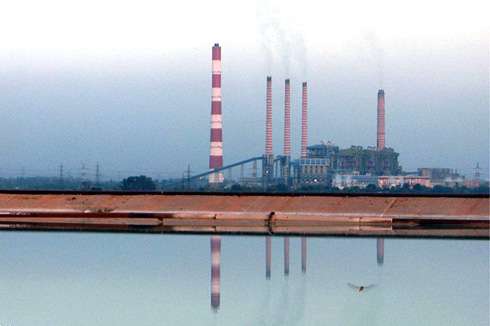The Indian Express carried an article on 20 September, authored by Member of Parliament, Varun Gandhi. The article asked some pertinent questions about the Indian energy sector and suggested some broad answers. The article pointed out valid weaknesses of our current energy set-up, such as India's increasing import dependence and limited natural resources, particularly oil resources.
The author also proposed solutions which may be broadly summarized as liberalising the energy sector to attract investments and allowing private sector efficiencies to address the problems. While private investments can indeed be a part of the solution to the energy puzzle, we believe that the problem needs a more holistic approach. This is because India's energy challenge is defined by three problems in addition to those mentioned in the article.
The first is energy access. 40 crore Indians . more than the entire population of the US . do not have access to electricity, though the Government deadline for providing universal electricity access was 2012. About 100 crore people . approximately the population of all of Africa . live in households with monthly electricity consumption of less than 100 Units, compared to an average of 3,500 Units for an efficient and environment-conscious country like Germany. Clearly, these figures do not sit well either with the inclusive development mantra or the image of India as an emerging world power, and call for focused efforts to address the problem.
The second is environmental degradation. While undue delays in granting clearances have been rightly pilloried by many commentators, data from the Ministry of Environment and Forests shows that almost all projects are eventually cleared. The deeper problem is that, once the clearance is granted, there is little or no oversight by the various pollution control boards to ensure that projects follow requisite environmental norms, or even collect and submit the required environmental data. This leads to massive environmental degradation in the vicinity of energy projects such as coal mines and power plants.
The third is the governance challenge . the fundamental challenge to be fixed, in our opinion. Institutions governing the energy sector have a very important role to play, irrespective of whether ownership is private or public, since the sector is natural resource and investment intensive. But the functioning and capacity of these institutions leave much to be desired, as illustrated by the following examples.
The dilapidated state of affairs in environmental management has already been mentioned, where practice falls far short of the reasonable set of laws and policies in existence. Many commentators have pointed out the inability of supposedly independent regulators in the power sector to set viable tariffs, though they were set up to free decision making from political expediency.
Indeed, regulators are expected to not only deal with tariff setting but also tackle complex tasks such as power purchase planning, monitoring the quality of electricity supply, regulating the performance of power generators, dealing with issues related to open access and integrating intermittent renewable energy sources. Sadly, many state power regulators are unable to deal with these, resulting in serious inefficiencies.

A power plant of National Thermal Power Corporation in Andhra Pradesh. Pic: Getsuhas08 via Wikimedia
The controversies in the oil and gas sectors, such as the justification for investments in the KG basin, the pricing of gas, the falling production levels, and the sale of oil fields by Cairn to Vedanta indicate that it is not just enough to attract private capital but also to have robust and fair licensing regimes that promote competition and protect public interest. Though the coal block allocation scandal has exposed one aspect of the governance deficit in the coal sector to the public eye, it has many other serious governance challenges too, such as the coal linkage allocation mechanism, quality assurance systems, effectiveness of the coal controller and serious law and order problems.
Energy efficiency is widely acknowledged as the cheapest and most environment friendly 'supply option' in an energy-starved country. However the Bureau of Energy Efficiency, the nodal agency to develop and implement energy efficiency programs, as well as designated agencies at state levels, remain understaffed and ill-equipped to fulfil their tasks. An intransigent industry and an inter-ministerial tug-of-war ensure that India has not introduced even reasonable, leave alone stringent, vehicle fuel efficiency standards though we import about 80 per cent of our petroleum needs, and it is the largest contributor to our current account deficit.
Making the sector investment friendly alone is not enough if the goal is to reform the energy sector to help drive genuinely just and inclusive development of India. This is illustrated by the fact that since 2003, when India liberalized electricity generation, the number of un-electrified households has only decreased by about 3 per cent even though total generation capacity has increased by 70 per cent and privately-owned generation capacity has increased by 110 per cent. Therefore, improved access to modern energy, an effective environmental regime and transparent, democratic and accountable governance institutions and processes need to be given equal attention.
These may not have easy or quick solutions. But, there is really no alternative to building and nurturing institutions, and carefully designing institutional
processes and systems. Unfortunately, there are no silver bullets.
























